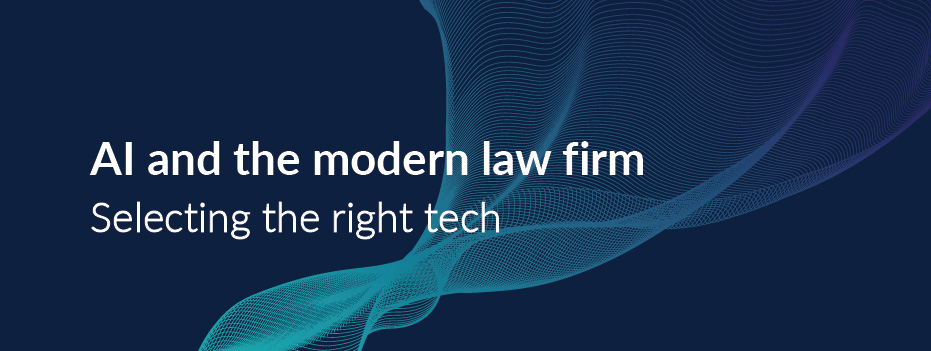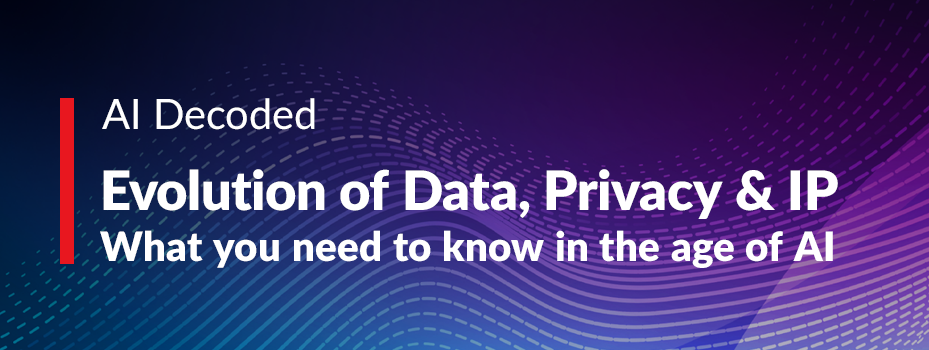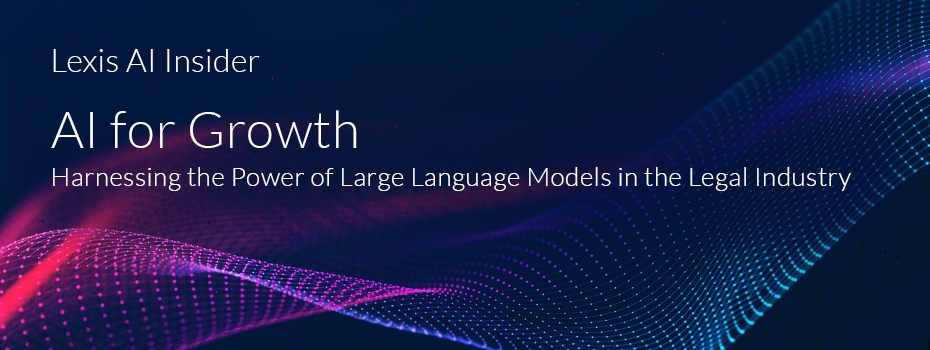
AI and the modern law firm: selecting the right tech
12 July 2023 14:30
Authored by Claire Linwood, Product Manager, LexisNexis Pacific
This is the first article in the future-proofing your firm for growth series.
Technology has long been part of what it means to practice law, with document automation, practice management systems, and computer-aided legal research part of lawyers’ day-to-day for decades. You could even argue that looseleaf services were an early form of legal tech – solving the problem of how to keep hardcopy legal content up to date. LexisNexis has been using AI in its search engine for over a decade. However, we’re now in the middle of a step change in legal technology as generative AI, and in particular large language models (LLMs), are poised to disrupt legal practice. With AI augmenting their practice and automating time-consuming manual tasks, lawyers will be freed up to devote more time to being strategic advisors and trusted partners for their clients.
So what can you do as a decision maker and thought leader in your firm to ensure effective implementation of AI solutions?’
First, upskilling in AI and its applications in legal tech is an excellent start. It’s not necessary to have a deep understanding of data science or the ways in which AI models work in the background in order to understand their basic functioning – it’s often enough to understand the data on which the model has been trained, its output, and how that output aligns with your expectations. It’s also a good idea to have a good grounding in key AI concepts, including the meaning of generative AI and LLMs.
Generative AI, as opposed to extractive AI models, are capable of creating new text, code, or images. One new type of generative AI model that has particular importance for the legal industry is the LLM. LLMs are AI models that have been trained on a vast, unstructured corpus of text to produce human-like text in response to prompts. Prompt engineering for LLMs is a particularly accessible skill for lawyers as it relies on good verbal reasoning skills.
Secondly, ensure that you can select a pressing problem or opportunity to be addressed by an AI solution. A paradigm-shifting technology like generative AI (and AI more generally) tends to produce so much hype that it is tempting to apply it first and see what it can do later. However, a technology in search of a problem to solve is not likely to produce optimal business outcomes. Here at LexisNexis, we anticipate that the most valuable legal use cases for generative AI will fall into the broad categories of summarisation, research and drafting. However, potentially valuable use cases at a more granular level are endless.
Consider using a cross-functional design thinking process to brainstorm key business problems or opportunities that it would be both feasible and valuable to solve. Start broad, taking into account both internal pain points (for example, difficulty accessing firm content and know-how when and where you need it) and external client needs and pain points (for example, the need to receive advice that is as simple as possible to understand and apply). Narrow down to a single problem or opportunity by voting, and ideate about how you might solve for that problem. Ideally, define a metric that will allow you to define what success would look like and track progress toward that goal.
Finally, ensure that you have buy-in from all relevant stakeholders. Even the most valuable and well-conceived applications of AI can fail to gain traction in an organisation if key stakeholders are not on board. This is where it helps to have cross-functional alignment on key problem spaces or opportunities. In its step-by-step guide to enterprise tech buying, Gartner recommends creating an evaluation team that will define requirements and objectives and test potential vendors against those requirements.[1]
In a period of technological disruption, it can be hard to know what steps to take to ensure your firm can grow and maintain its competitive advantage – without wasting time and resources on applications that don’t meet your needs. However, doing nothing is likely not an option that will bear fruit in the long term. Neither is a ‘wait and see’ approach going to work in this very fast-paced tech-driven environment. Taking a back seat could see your competitors building up a competitive advantage.
LexisNexis provides legal professionals with intelligent, AI-powered products and tools to streamline and enhance legal workflows. We are incorporating generative AI into our products in order to provide our customers with trusted and authoritative content as efficiently and reliably as possible. Contact us for a demonstration of our AI-enabled legal research platform Lexis+, or to collaborate with us in legal tech innovation.
To read more articles on the transformative potential of AI and on how law firms and lawyers can prepare to embrace the AI revolution, join the Lexis AI Insider program today.
[1]Gartner, ‘Enterprise tech buying: a step-by-step guide’, https://www.gartner.com/en/topics/successful-tech-buying-process
Related Articles
-
 Generative AI for Lawyers: What It Is, How It Works, and Using It for Maximum Impact
Generative AI for Lawyers: What It Is, How It Works, and Using It for Maximum Impact -
 Of all the issues posed by the growth of AI, the data privacy and IP implications are certainly among the most interesting. What data was the AI bot trained on? How is it used? How easily accessible is it by another party? What rights does a creator have if their work is being replicated or adapted without their consent?
Of all the issues posed by the growth of AI, the data privacy and IP implications are certainly among the most interesting. What data was the AI bot trained on? How is it used? How easily accessible is it by another party? What rights does a creator have if their work is being replicated or adapted without their consent? -
 Major reforms have passed that change the way in which organisations must respond to any breach of their customer’s data. The scope of the NSW privacy commissioner’s position has also significantly increased. This article explores this and their effect, and ultimately prescribes methods for protection of organisations into the future.
Major reforms have passed that change the way in which organisations must respond to any breach of their customer’s data. The scope of the NSW privacy commissioner’s position has also significantly increased. This article explores this and their effect, and ultimately prescribes methods for protection of organisations into the future.
 LexisNexis
LexisNexis